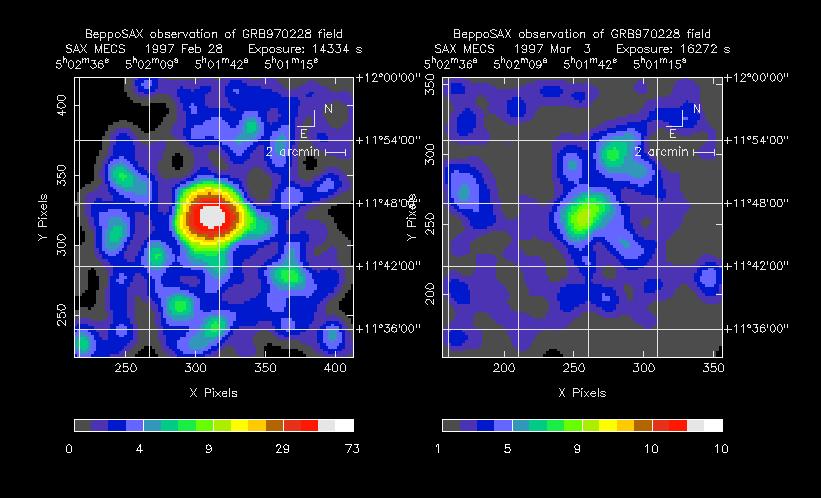


The breakthrough was provided by the BeppoSAX X-ray satellite.
BeppoSAX is an Italian-Dutch X-ray satellite and carries both a gamma-ray
burst monitor in addition to an X-ray telescope. On 28 February 1997, a
gamma-ray burst was discovered simultaneously in data from the Gamma Ray Burst Monitor and Wide
Field Cameras onboard by the team of Italian/Dutch scientists at the
Scientific Operations Center in Nuova Telespazio, Rome. The Italian
scientists responsible for the gamma-ray burst detector onboard the
satellite (E. Costa, CNR, and F. Frontera, University of Ferrara), in
conjunction with the Mission Scientist (L. Piro, CNR) and the Mission
Director (R. C. Butler, ASI), were able to reschedule the satellite
observations and point the BeppoSAX narrow field X-ray telescopes (the Low
Energy Concentrator Spectrometer and the Medium
Energy Concentrator Spectrometer) in only 8 hours at the gamma-ray
burst source. As a result, an unknown X-ray source, in the constellation of
Orion, was discovered and localized with an accuracy of one hundreth of a
degree. A second follow-up was performed with narrow field instruments
after about 2 days. This second observation showed a drop in the source
flux by about a factor of 20, suggesting that this transient X-ray source
and the transient gamma ray source were one and the same. The X-ray
pictures taken during the two follow-up observations are shown in the
figure above. The X-ray afterglow of the GRB is the strong source in the
image on the left which appears much weaker in the image on the right.
Thanks to the precise position determined from the X-ray counterpart,
subsequent observations in the radio and optical have strongly suggested
that this GRB is associated with a star-forming
galaxy.